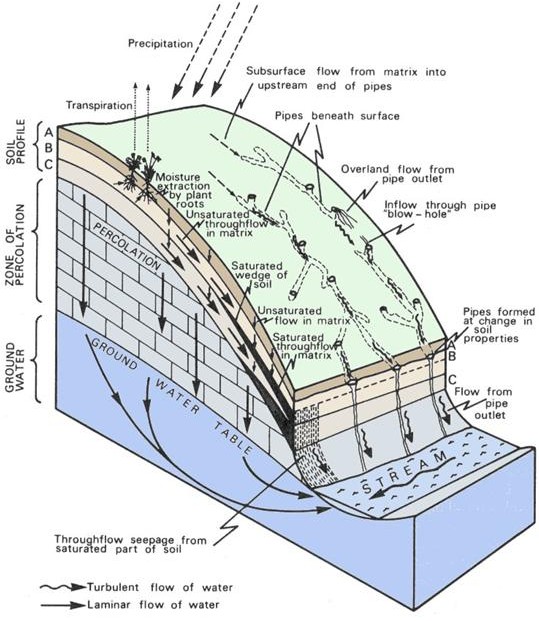|
Runoff Generation Mechanisms
Refer to Chapter 2 of the Rainfall Runoff Processes Workbook
This chapter focuses on the pathways taken by water in moving to streams and the mechanisms for runoff generation. Water
moves either over the surface as overland flow or infiltrates to flow
through the subsurface within the soil matrix as well as through
preferential pathways known as macropores. Macropores include pipes that are open passageways in the soil caused by decaying roots and burrowing animals. Macropores also include larger structural voids within the soil matrix that serve as preferential pathways for subsurface flow. The
permeability of the soil matrix may differ between soil horizons and
this may lead to the build up of a saturated wedge above a soil horizon
interface. Water in these
saturated wedges may flow laterally through the soil matrix, or enter
macropores and be carried rapidly to the stream as subsurface stormflow
in the form of interflow. Research
in hillslope hydrology has shown that rapid lateral flow through a
network of macropores is responsible for significant quick flow runoff
in humid areas. This quick flow often has similar chemical and isotopic composition to old water, held in the soil matrix prior to rainfall. The
effusion of old water from the soil matrix into the lateral flow
macropore network is triggered by soil moisture content exceeding a
threshold.

Pathways followed by subsurface runoff on hillslopes. (From Kirkby, 1978)
|

